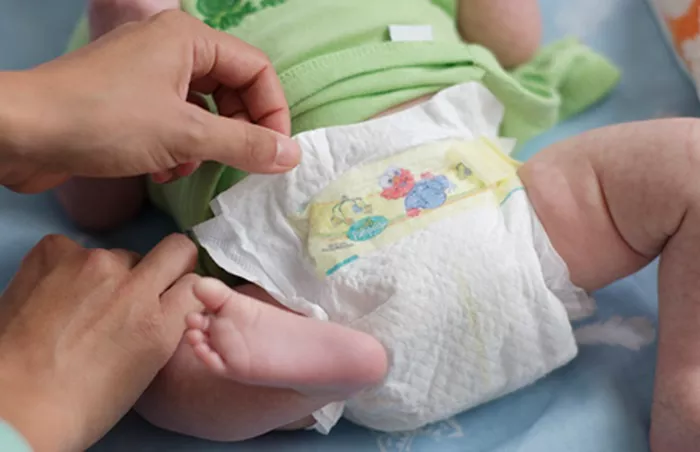When preparing for a new baby, one of the most common questions new parents have is about diapers. How many packs of newborn diapers should you buy? This article will guide you through the essentials of newborn diapers, helping you plan better for your little one’s needs.
Understanding Newborn Diaper Sizes
Newborns come in different sizes, and so do diapers. Most brands offer a “newborn” size, which fits babies up to 10 pounds. If your baby is born larger, you may want to consider “size 1” diapers, which fit babies from 8 to 14 pounds.
It’s crucial to monitor your baby’s weight as they grow. This will help you choose the right size diapers at the right time. Always check the packaging for the recommended weight limits. This ensures your baby is comfortable and secure in their diapers.
Frequency of Diaper Changes
Newborns typically need diaper changes frequently. On average, you can expect to change your baby’s diaper about 8 to 12 times a day. This frequency can depend on factors such as:
- Your baby’s diet
- Their individual needs
- Whether they are breastfed or formula-fed
Breastfed babies tend to have more frequent bowel movements, while formula-fed babies may have fewer. Regardless, expect to be changing diapers throughout the day and night.
Estimating Daily Diaper Needs
Based on the average of 8 to 12 diaper changes per day, you can calculate how many diapers you will need for a week.
Daily average: 10 diapers (a middle ground)
Weekly total: 10 diapers x 7 days = 70 diapers per week
Over the course of a month, this adds up to around 280 diapers.
How Many Packs of Diapers Should You Buy?
Most packs of newborn diapers contain between 30 to 50 diapers. Here’s how to calculate how many packs you should buy for the first month:
Total Diapers Needed: 280 diapers
Average Pack Size: 40 diapers per pack
Number of Packs: 280 diapers ÷ 40 diapers per pack = 7 packs
So, for the first month, you should aim to buy about 7 packs of newborn diapers.
Stocking Up for the Future
While it’s essential to stock up for the first month, consider your baby’s growth. As they gain weight, you may transition to size 1 diapers. It’s a good idea to keep a few packs of size 1 on hand, especially if you notice your newborn is approaching the weight limit for newborn diapers.
Diaper Brands and Their Sizing
Different brands may have slightly different sizing, absorbency, and fit. Here’s a brief overview of some popular diaper brands and their newborn options:
Pampers Swaddlers: Often recommended for their softness and good fit for newborns.
Huggies Little Snugglers: Known for their leak protection and gentle on sensitive skin.
Luvs: A more budget-friendly option, though they may not be as soft as other brands.
Trying a few different brands may help you find the best fit for your baby. Each baby is unique, and what works for one may not work for another.
Choosing Between Disposable and Cloth Diapers
Another decision you’ll need to make is whether to use disposable or cloth diapers. Each option has its pros and cons.
Disposable Diapers
Convenience: Easy to use and throw away. Great for busy parents.
Cost: Can be more expensive over time, but initial costs are low.
Cloth Diapers
Environmental Impact: More eco-friendly as they can be reused.
Cost: Higher initial investment, but lower long-term costs if you wash and reuse them.
Deciding between the two often depends on your lifestyle and preferences. Some parents even choose to use a combination of both.
Buying Diapers in Bulk
Buying in bulk can be a smart choice for saving money. Many retailers offer discounts on larger packs or subscriptions that deliver diapers to your home regularly. Consider the following:
Storage Space: Make sure you have enough room to store diapers safely and away from moisture.
Return Policies: Some stores allow you to return unopened packs, which is helpful if you overestimate your needs.
Keeping Track of Usage
Once your baby arrives, it can be helpful to keep a log of how many diapers you are using daily. This information can help you adjust your buying plan for the following months.
Tips for Tracking
Use a Diaper Diary: Note each change, including wet and dirty diapers.
Monitor Baby’s Growth: Track your baby’s weight to anticipate when you may need to switch sizes.
This will make it easier to adjust your shopping list and budget for diapers in the future.
Conclusion
When preparing for a new baby, planning for diaper needs is crucial. Expect to use about 280 newborn diapers in the first month. This translates to around 7 packs, depending on the brand and pack size.
Always monitor your baby’s growth to ensure you have the right size diapers. Whether you choose disposable or cloth, keep track of your usage for future planning.
With a little preparation, you’ll be ready to handle those diaper changes with ease, allowing you to focus on what truly matters—caring for your new bundle of joy.
Related topics:


